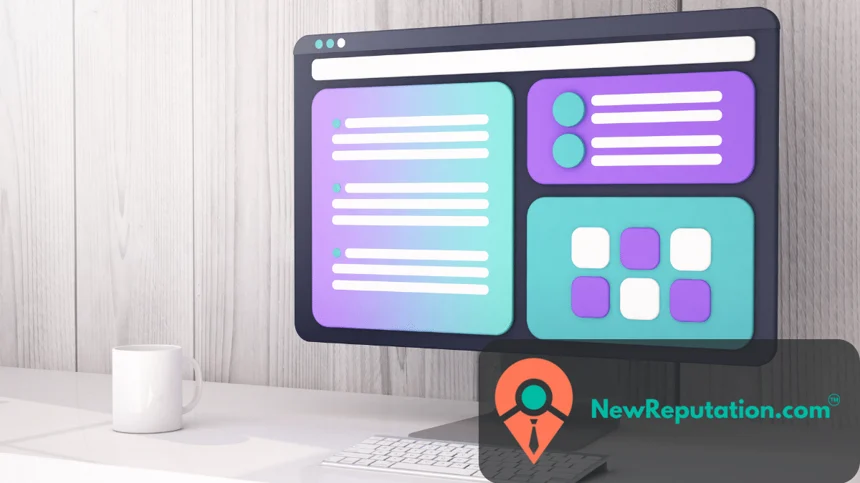End user optimization, often abbreviated as E.U.O., is a multifaceted strategy that focuses on enhancing every aspect of a user’s interaction with your website.
From lightning-fast loading times to compelling content and seamless navigation, E.U.O. aims to leave a lasting impression on visitors.
This article will explore key strategies to achieve end-user optimization and make your website stand out.
Optimize Your Site to Load Faster
Slow and steady does not win the race in the digital world.
One of the fundamental aspects of E.U.O. is optimizing your website’s speed. Users today need more patience for sluggish websites.
A delay of just a few seconds in page loading can significantly drop engagement and conversions.
Here’s how you can boost your website’s loading speed:
- Image Compression: Compress images to reduce their file sizes without compromising quality.
- Minimize HTTP Requests: Reduce the number of elements on your web page, such as scripts and stylesheets, to decrease the number of HTTP requests.
- Browser Caching: Enable browser caching to store static resources locally, reducing the need to download them with every visit.
- Content Delivery Network (C.D.N.): Utilize C.D.N.s to distribute website content across multiple servers worldwide, reducing user latency.
- Optimize Code: Minify your HTML, CSS, and JavaScript to reduce file sizes.
By optimizing your site for speed, you create a smoother and more enjoyable experience for your users, which can lead to higher engagement and improved search engine rankings.
CONVERT Model in Your Landing Pages
Landing pages are often the first point of contact between your website and potential customers. Using the CONVERT model can significantly enhance the effectiveness of your landing pages. CONVERT stands for:
- C: Clear and Concise: Ensure your landing page is straightforward and clearly conveys its purpose. Avoid clutter and unnecessary distractions.
- O: Offer Value: Provide something of value to your visitors, such as a special offer, valuable content, or a solution to a problem.
- N: Nurture Trust: Build trust through testimonials, certifications, and security badges. Transparency and credibility are essential.
- V: Visual Appeal: Use eye-catching visuals and design elements that align with your brand. Make sure your landing page is visually appealing and easy to read.
- E: Easy Conversion: Simplify the conversion process. Reduce the number of form fields and make it easy for users to take the desired action.
- R: Responsive Design: Ensure your landing page is fully responsive and functions seamlessly on various devices and screen sizes.
- T: Test and Iterate: Continuously refine your landing pages to improve conversion rates. A/B testing can help you identify what works best.
By implementing the CONVERT model, you can optimize your landing pages to convert more visitors into customers or leads.
Create a Memorable Content Experience for Users
Content is king, but it’s not just about quantity; quality and presentation matter, too. To provide a memorable content experience, consider the following:
- High-Quality Content: Create informative, engaging, and valuable content for your audience. Content should be well-researched and free of errors.
- Visual Appeal: Incorporate multimedia elements like images, videos, infographics, and charts to make your content visually appealing and easier to digest.
- Structured Content: Use headings, subheadings, bullet points, and short paragraphs to improve readability.
- Storytelling: Craft compelling narratives that resonate with your audience. Stories can make your content more relatable and memorable.
- Personalization: Tailor content to the preferences and needs of individual users whenever possible. Personalized content tends to perform better.
- Interactive Elements: Include interactive features like quizzes, polls, and surveys to engage users and gather data.
Remember, the goal is to create an experience that informs, captivates, and resonates with your audience, leaving a lasting impression.
Focus on Your Site Objective and Calls to Action
Every website should have a clear objective, whether selling products, generating leads, providing information, or something else entirely. Your calls to action (C.T.A.s) should align with this objective and guide users toward the desired actions.
- Clear C.T.A.s: Make sure your C.T.A.s are visible, concise, and action-oriented. Use compelling language that encourages users to take the next step.
- Strategic Placement: Position C.T.A.s strategically throughout your website, especially on key pages like product pages, blog posts, and landing pages.
- A/B Testing: Experiment with different C.T.A.s and placements to determine what drives the best results. A/B testing can reveal valuable insights.
You can enhance user engagement and conversion rates by aligning your C.T.A.s with your site’s objective and continuously optimizing them for performance.
Keyword Integration
Finally, remember the importance of keyword integration. Keywords are the terms and phrases users use to find content and services online. By strategically integrating relevant keywords into your website’s content, meta tags, and headers, you can improve its visibility in search engine results, driving more organic traffic.
Consider conducting keyword research to identify the most relevant and valuable keywords for your niche or industry. Then, incorporate these keywords naturally into your content to optimize your website for search engines.
Contact NewReputation
For expert guidance on implementing end-user optimization and other digital strategies, contact NewReputation. Our team of professionals is here to help you enhance your website’s performance, user experience, and overall online presence.

Kevin Curran is the founder and CEO of NewReputation, a renowned online reputation management firm. He is also the co-founder of ReputationPrivacy, a platform designed to help individuals manage their digital footprint effectively. Kevin has worked with diverse clients, including Fortune 500 companies, high-profile executives, and small business owners, to establish an authentic online presence that accurately represents their brand.

